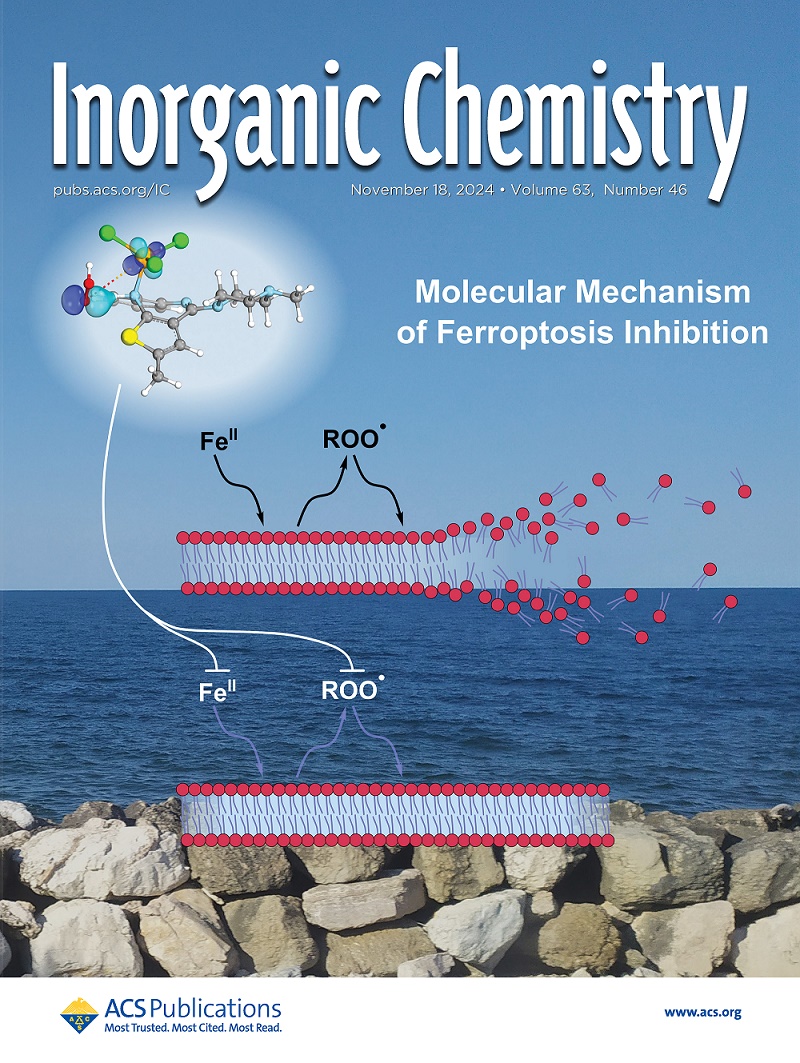Osmium(IV) Tetraaryl Complexes Formed from Prefunctionalized Ligands
IF 4.3
2区 化学
Q1 CHEMISTRY, INORGANIC & NUCLEAR
引用次数: 0
Abstract
Transition metal(IV) tetraaryl, M(aryl)4, complexes hold great promise as functional building blocks for complex organometallic materials, yet their widespread utility depends on the development of improved synthetic protocols and a deeper understanding of their chemical structure–property relationship(s). Here we show that Os(aryl)4 complexes with preinstalled functional groups (–F, –Cl, –Br, –I, and –SMe) can be prepared from reactions between (Oct4N)2[OsBr6] and Grignard reagents formed by halogen/magnesium insertion or exchange. This approach provides access to compounds that may otherwise prove challenging to prepare through postfunctionalization strategies, such as those comprising halogens in the 2- or 5-positions. We characterize these, as well as previously reported, materials using single-crystal X-ray diffraction, solution voltammetry, and UV–vis spectroscopy. Through a comparison of 13 differently substituted complexes, we identify correlations between their electrochemical and optical gaps, and between the E1/2 of their 0/1+ redox event and an adjusted Hammett parameter that accounts for all aryl ligand substituents. The electronic property trends observed are further rationalized through a series of first-principles calculations based on density functional theory. Together, this work lays a foundation for advancing new preparative methods to further derivatize such species, and a robust experimental data set to help benchmark future experimental and computational compound characterization.

由预功能化配体形成的锇(IV)四芳基配合物
过渡金属(IV)四芳基,M(芳基)4配合物作为复杂有机金属材料的功能构建块具有很大的前景,但它们的广泛应用取决于改进的合成方案的发展和对其化学结构-性质关系的更深入理解。本研究表明,(Oct4N)2[OsBr6]与卤素/镁插入或交换形成的格氏试剂之间的反应可以制备具有预安装官能团(-F, -Cl, -Br, -I和-SMe)的Os(芳基)4配合物。这种方法提供了通过后功能化策略制备具有挑战性的化合物的途径,例如在2位或5位含有卤素的化合物。我们利用单晶x射线衍射、溶液伏安法和紫外可见光谱对这些材料以及先前报道的材料进行了表征。通过对13种不同取代配合物的比较,我们确定了它们的电化学和光学间隙之间的相关性,以及它们的0/1+氧化还原事件的E1/2与调整后的Hammett参数之间的相关性,该参数适用于所有芳基配体取代基。通过一系列基于密度泛函理论的第一性原理计算,进一步合理化了所观察到的电子性质趋势。总之,这项工作为推进新的制备方法以进一步衍生这些物种奠定了基础,并为未来的实验和计算化合物表征奠定了坚实的实验数据集。
本文章由计算机程序翻译,如有差异,请以英文原文为准。
求助全文
约1分钟内获得全文
求助全文
来源期刊

Inorganic Chemistry
化学-无机化学与核化学
CiteScore
7.60
自引率
13.00%
发文量
1960
审稿时长
1.9 months
期刊介绍:
Inorganic Chemistry publishes fundamental studies in all phases of inorganic chemistry. Coverage includes experimental and theoretical reports on quantitative studies of structure and thermodynamics, kinetics, mechanisms of inorganic reactions, bioinorganic chemistry, and relevant aspects of organometallic chemistry, solid-state phenomena, and chemical bonding theory. Emphasis is placed on the synthesis, structure, thermodynamics, reactivity, spectroscopy, and bonding properties of significant new and known compounds.
 求助内容:
求助内容: 应助结果提醒方式:
应助结果提醒方式:


